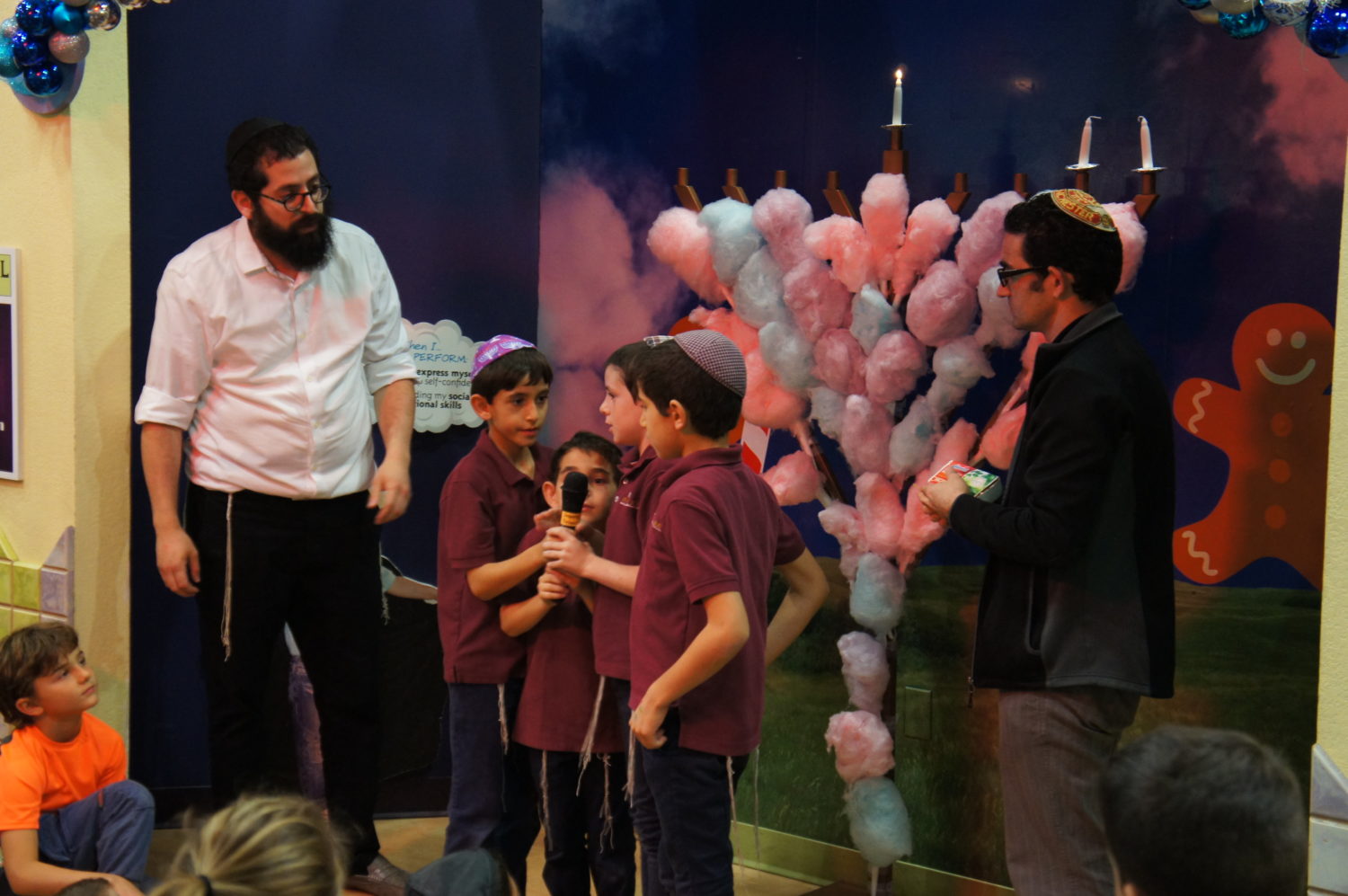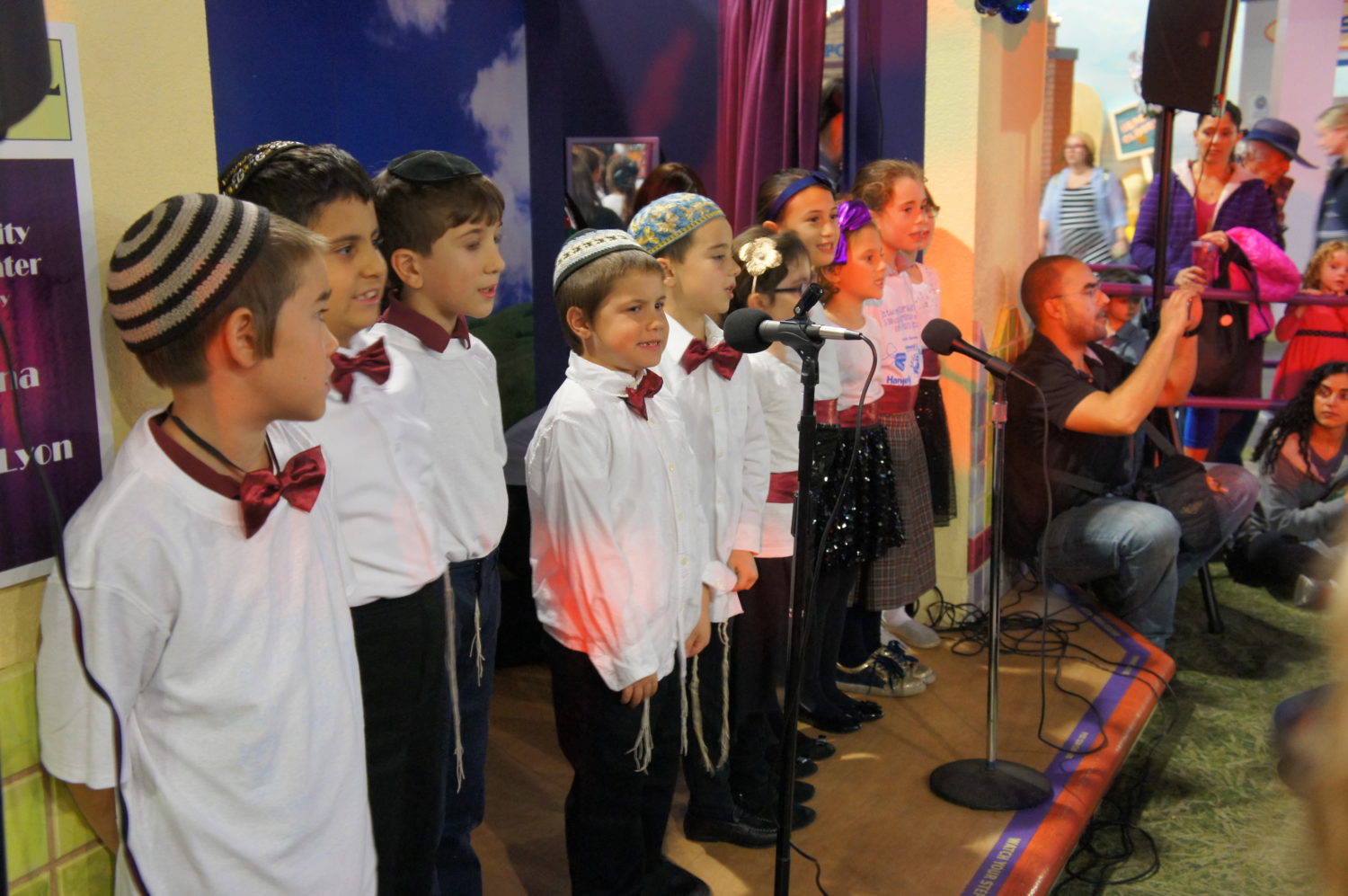As the holiday season descends upon businesses and consumers, students and teachers, and anyone whose job is affected by holiday traditions, many parents renew their efforts at attempting to downplay the bling and bacchanalia of the season to their children; after all, beyond the colorful decorations, pretty wrapping paper and highly anticipated gifts, the holidays have religious and cultural roots that still matter to a lot of people. The Jewish observance of Hanukkah is the oldest of these [no slight intended to observants of the various winter solstice celebrations of ancient civilizations], and despite the fact that it is about 500 years older than Christmas, it is not nearly as widely observed. For those seeking to discover more about the holiday, Pretend City Children’s Museum will present its annual all-ages Hooray for Hanukkah program series from December 22-30.

(Courtesy of Pretend City Children’s Museum)
The series includes seven days of events based around storytelling and hands-on activities. Some of those activities include: making dreidels (the four-sided spinning tops used to play the traditional dreidel game), making candles, singing songs and making menorahs (the holiday’s iconic candelabrum). While storytelling and fun activities are nice diversions, a closer look at the methodology of Pretend City’s programming reveals that the goals behind these activities and those of all the programming at the children’s museum are rooted in educational content standards. To learn more about the educational objectives that fuel the fun activities at Pretend City, Irvine Weekly spoke with Leslie Perovich, the museum’s chief operating officer.

(Courtesy of Pretend City Children’s Museum)
When we asked Perovich about the teaching backgrounds of Pretend City’s staff, she revealed that most of the museum’s staff members have studied or are studying education. “Our director of education has her master’s from Pacific Oaks in early childhood education. Our floor manager has her bachelor’s in education, and about half of our staff are either getting their credentials or have their credentials in early childhood [education].”
Perovich then detailed the connection between the educational foundations of the museum’s programming and the fun activities that those foundations yield — activities which are actually educational curriculum. “When we write our curriculum, there’s a note on [it] that has the purpose behind the play. So for example, if I look at Celebrate Las Posadas! [an event which the museum will feature on Dec. 16], I can see the purposes behind the play are creative expression, music expression and exploration, and social emotional development. The staff know what the content is, and it’s that way with all of our programming.”
Regarding the specific educational goals targeted by the Hooray for Hanukkah series, Perovich pointed out that the program is essentially designed around teaching children about a number of levels of diversity.
“[Hooray for Hanukkah is centered on] an understanding of what the celebration is. I think that’s probably the most important,” she said. “[Then there are] the finer things of the language and literacy development, the social emotional development — that kind of thing.” Perovich went on to explain that while this and other museum events teach an understanding about different cultural traditions, the design of their programs also factor in EDI (early developmental index) data, which the museum staff gets from the First 5 Orange County, Children & Families Commission.
The First 5 website identifies the index as a “population-based measurement of early child development and school readiness in five key domains: physical health, social competence, emotional maturity, language and cognitive skills, and communications skills and general knowledge.” This information is used to determine the degree to which children are prepared to succeed in their early schooling. Thus, while Hooray for Hanukkah and similar museum programs address cultural diversity, the activities also target essential developmental requirements while exploring the various facets of different cultures. This, of course, enables the museum’s staff to develop educational activities based around virtually any cultural tradition.

(Courtesy of Pretend City Children’s Museum)
Beyond the numerous holiday events that are listed on the museum’s website, Perovich announced a number of culturally diverse programs that will be featured at Pretend City in early 2020. She said, “We do a lot [of culturally diverse programming]! We do four or five in January. In February, we’re doing the Asian Cultural Festival. We’re doing Tu B’Shevat! We do Mardi Gras — that’s kind of a fun one. In March, We’re doing Purim. We’re doing Persian New Year. In April [we’re doing] Ramadan; we have pretty robust Muslim programming. In May we’re doing May Day, which is a Russian tradition.”
Most educators have a tough time making students appreciate the benefits of learning. However, both children and adults have opportunities to learn and have fun while engaging with the activities provided by the Pretend City Children’s Museum; so whether you’ve got children whose world view you’d like to enrich through exposure to diverse cultural traditions, or whether you’d like to enhance your own world view while teaching the little ‘uns that there’s more to the holidays than receiving gelt [money, or Hanukkah gelt, which are chocolate coins], the Pretend City Children’s Museum is a perfect destination.
Pretend City Children’s Museum, 29 Hubble, Irvine, CA 92618 (949) 428-3900 www.pretendcity.org
Advertising disclosure: We may receive compensation for some of the links in our stories. Thank you for supporting Irvine Weekly and our advertisers.

